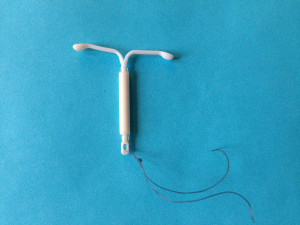Since 1982, the birth control pill has been the most popular contraceptive method among American women to prevent pregnancy. It is classic, popular and 99.9 percent effective for preventing pregnancy when taken correctly. Although popular, the pill may not always be the best method of contraception. Other options, such as Intra-Uterine Devices (IUDs), might be better suited for an individual depending on their lifestyle and medical needs.
“Birth control pills contain different combinations of the hormones progesterone and estrogen. These hormones regulate the menstrual cycle. When taken in the pill form, these hormones suppress fertility,” wrote Katie Haas from Vera Whole Health, the onsite care clinic at Mills College.
“One of the biggest pros of birth control pills are that symptoms like cramps, heavy bleeding, and acne can be made better when birth control pills are taken as prescribed. For those who do not want to have a period, the right pill can suppress menstruation as well,” Haas said. “The cons are that for those who are smokers, or have certain types of migraines, there can be an increased risks of blood clots.”
Out of 61 million American women of reproductive age (15–44), 25.3 percent use the pill, The Guttmacher Institute found in a study of contraceptive methods used by U.S. women in 2014.
To be 99.9 percent successful, the pill must be taken every day at the same time.
“This is often not the case,” said Dr. Vanessa Cullins, Planned Parenthood’s vice president of external medical affairs in an interview with journalist Sarah Kliff. “It’s hard to actually [take the pill at the same time every day] when you’re living a busy life.”
There is some latitude, according to Cullins. Progestin-only pills can be taken for up to three hours after the time taken the prior day. This means that if someone were to take a pill at 7:00 a.m. one day, they would have until 10:00 a.m. the following day to take another one without lowering its efficacy. For combination progestin-estrogen pills, the space is even wider.
The pill has a 91 percent efficiency rate on the Planned Parenthood website. In other words, 9 out of every 100 women could become pregnant on the pill in any given year. Other contraceptives, particularly IUDs, have proven to be much more effective.
“Intra-Uterine Devices (IUDs) have the highest success rates,” wrote Haas. “Condoms and other barrier protections have a higher failure rate due to user error but are the only birth control methods to prevent sexually transmitted infections (STIs).”
“IUDs are small flexible T-shaped rods that are inserted into the uterus. Some have hormones and others do not. The hormones, similarly to the other hormone (based contraception), suppress fertility. IUDs also prevent pregnancy by preventing implantation of embryos into the uterus wall,” wrote Haas. “The biggest pro is that once an IUD is in, you do not have to think about it. Also, some types of IUDs make periods light or possibly go away. The cons are that IUDs can be uncomfortable to have placed.”
IUDs are 99 percent effective and can last from three to 12 years depending on the type and brand, according to Planned Parenthood’s website.
Yet, only 11.8 percent of American women of reproductive age use an IUD, the Guttmacher Institute found. This is compared to a United Nations finding, in 2015, that worldwide IUDs are one of the most common methods of birth control; 14 percent of married and in-union women use an IUD compared to 9 percent on the pill.
“Vera does not currently offer IUDs, but our team can help students interested in this method of birth control connect with a provider who can perform this service,” wrote Haas. “Planned Parenthood or a referral to a gynecologist are the most commonly available options for students interested in having an IUD placed.”
Vera Whole Health encourages students interested in learning more about their birth control options to schedule an appointment with them, or another trusted healthcare provider, to discuss what would best fit their medical needs and individual preferences.

